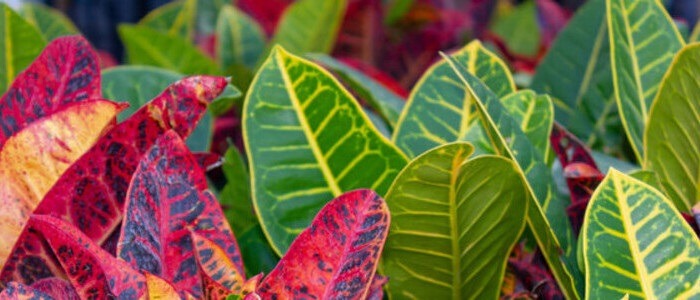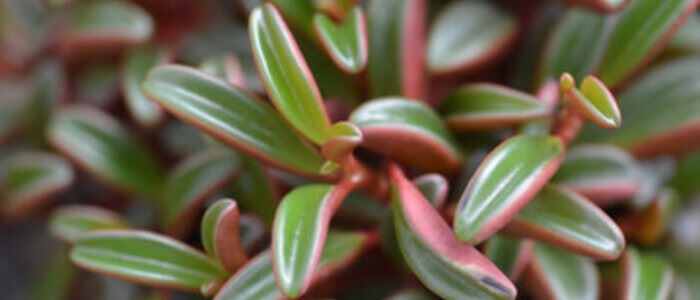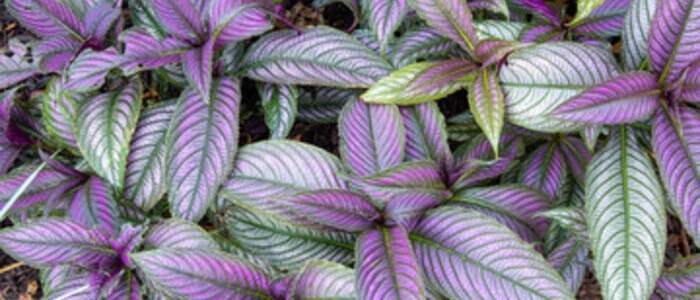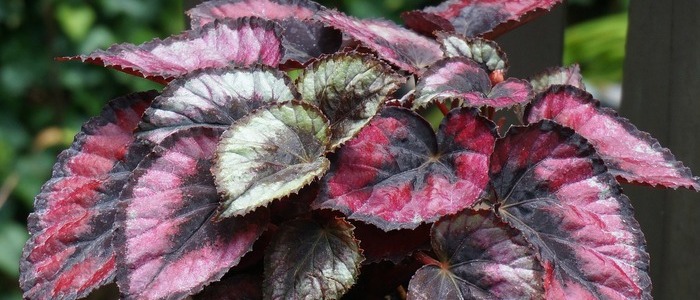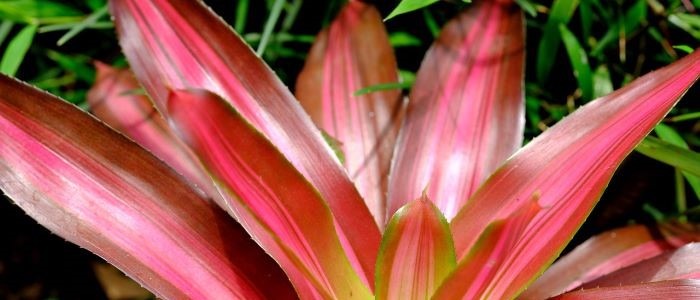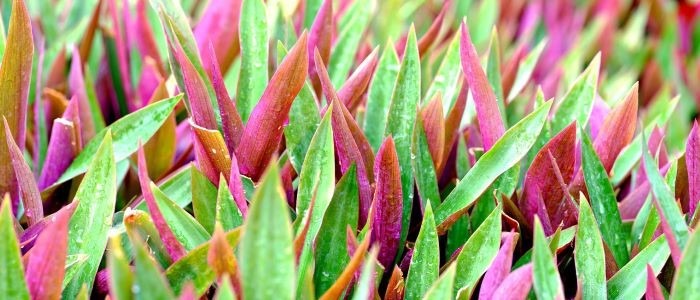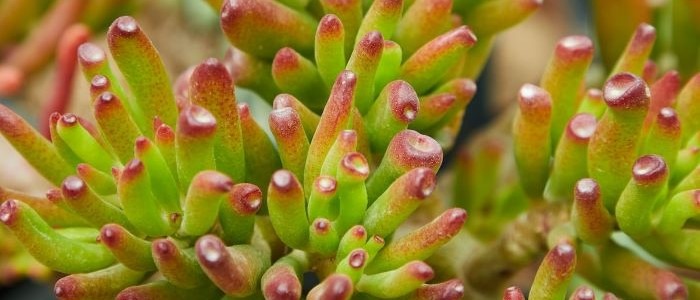The Calathea Dottie plant is a beautiful and unique species of houseplant that is easy to care for and can be enjoyed for years to come. It is native to tropical climates, making it perfect for bringing a bit of the outdoors inside. The Calathea Dottie comes in several varieties, each offering its own unique beauty.
The Calathea Dottie typically grows to between 18-24 inches in height, making it an ideal size for smaller spaces or areas with limited light. With proper care, the plant will bloom with vibrant purple flowers throughout the summer months.
The Calathea Dottie plant is known for its lush green foliage with deep purple undersides creating a stunning contrast when viewed from different angles. Its leaves are smooth and waxy on top, while its stems are often curved or twisted in shape. This makes them easy to recognize among other houseplants and adds an interesting twist to any living space.
No matter which variety you choose, the Calathea Dottie will be sure to bring life and beauty into your home or office space. With just a few simple steps you can have this attractive species blooming all year round!
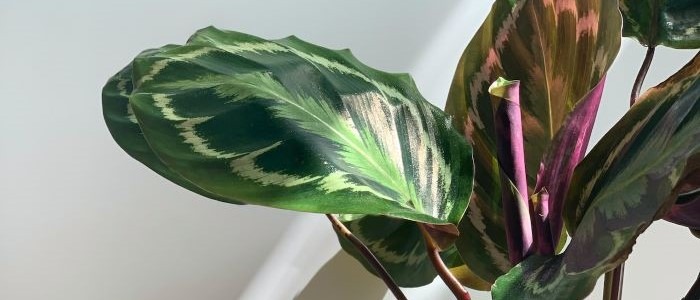
Calathea Dottie Plant Frequently Asked Questions
How often should I water Calathea Dottie?
Calathea Dottie, like most Calathea varieties, prefers consistently moist soil. It is important to water it whenever the top inch of soil feels dry to the touch. However, be cautious not to overwater as it can lead to root rot. In general, watering once or twice a week should be sufficient, but always check the moisture level of the soil before watering to ensure the plant's specific needs are met.
Does Calathea Dottie need direct sunlight?
Direct sunlight can be too harsh for the delicate leaves of this plant and may cause them to burn or fade. It is best to place Calathea Dottie in a location with filtered or shaded light to ensure its optimal growth and vibrant foliage.
Light Requirements for Caring for a Calathea Dotties
Light is an important factor when it comes to caring for a calathea dottie plant. The ideal light situation for the Calathea Dottie is bright, indirect light from an east or west facing window. Direct sunlight should be avoided as this can cause the leaves to become scorched and discolored. During the winter months, more direct light may be needed to supplement natural lighting and artificial lighting can be used to provide additional illumination. When using artificial lighting, make sure that the lights are placed 6-12 inches away from the plant in order to avoid any damage.
The amount of light required by Calathea Dottie plants will vary depending on their age and size – younger plants will need more light than mature specimens. If you’re not sure whether your plant is getting enough light, watch out for signs such as lack of growth or pale foliage. If your calathea dottie isn’t receiving enough light, try moving it closer to a window or investing in an artificial grow light if necessary.
If your calathea dottie is getting too much direct sunlight, you may want to consider providing some shade with a sheer curtain or blinds during peak hours during summer months – this will help keep direct sun off of its delicate leaves and prevent any scorching or discoloration from occurring.
Caring for a calathea dottie plant means making sure it is receiving adequate amounts of indirect sunlight throughout the day in order for it to thrive. With proper care and attention, your calathea dottie can bring vibrant life and beauty into any living space for many years!
Ideal Soil and Potting Recommendations for Calathea Dottie
Caring for a Calathea Dottie requires special attention when it comes to soil and potting recommendations. The type of potting soil that is best for this plant should be well-draining, yet still retain some moisture. A combination of peat moss, perlite, and vermiculite works well for most plants as it provides adequate drainage and retains enough moisture to keep the roots healthy.
The ideal pH level for the soil should range between 5.5 and 6.5. To ensure proper drainage, use a terra cotta or clay pot that has at least one drainage hole in the bottom. Additionally, make sure to use a pot that is slightly larger than the root system of your plant so that there is room for growth.
Fertilizing your Calathea Dottie should be done during its growing season in spring and summer with an all-purpose fertilizer diluted at half strength every two weeks or so. During fall and winter months, fertilization can be reduced to once a month or even skipped altogether if desired.
Repotting your Calathea Dottie should be done when necessary in order to provide additional room for its root system as it grows over time. Generally speaking, repotting is necessary every 1-2 years depending on how quickly the plant grows in size and how much space is available in its current pot.
When choosing a new pot size remember to go up only one pot size from where you currently are – any more than this could cause too much stress on the root system of your plant which could lead to stunted growth or even death of the plant over time due to overwatering or poor drainage caused by excessive soil volume around the roots.
By taking these steps into consideration when caring for your Calathea Dottie, you can ensure that it thrives and blooms beautifully without worry!
Watering Guidelines for The Calathea Dottie Plant
Caring for your Calathea Dottie is essential to keeping the plant healthy and vibrant. The key to successful watering is avoiding overwatering or underwatering. It’s best to wait until the top few inches of soil feel dry before watering again, and you can also insert a finger into the potting mix up to two knuckles deep – if it’s damp below this point, then don’t water yet.
Tap water is generally suitable; however, if tap water contains high levels of chlorine or fluoride then filtered or purified bottled water should be used instead. The amount of liquid required depends on variables like temperature and humidity in your home, how often leaves are misted and how much light receives – more light means more evaporation from the leaves so increased watering might be necessary at times.
When growing season (spring-summer) comes around give one cup of liquid per week; cut down by half during non-growing season (fall-winter). Misting the foliage with a spray bottle once or twice daily not only hydrates them but also increases humidity levels – this prevents brown tips due to dryness. Not only that, it’s an enjoyable way to connect with nature while caring for your houseplant!
By following these instructions diligently you can have a beautiful calathea dottie blooming throughout the year!
Propagating the Calathea Dottie
Propagating the calathea dottie is a great way to increase your collection of plants without having to buy new ones. There are two main methods for propagating the calathea dottie: tip cuttings and division.
Cuttings are a simple process that involves removing a portion of the stem with at least one node, or leaf bud, attached. The cutting should be planted in moist soil with the node covered and kept out of direct sunlight until it has rooted after about four weeks. Once the cutting has taken root, it can then be repotted into a larger pot with fresh soil.
Division is another easy method for propagating calathea dottie plants. This process involves carefully dividing an established plant into individual pots with fresh soil. To do this, you will need to remove the plant from its current pot and gently separate it into sections so that each section contains roots and several stems intact. You can then replant these sections in individual pots filled with fresh soil and water them thoroughly to help them settle in.
Whichever propagation method you choose, make sure you provide plenty of light but not too much direct sun and water regularly but not too often so as not to overwater the plant. With these steps followed properly, you’ll soon have a thriving calathea dottie gracing your home!
Conclusion
The Calathea Dottie plant is a stunning addition to any indoor space. Its unique purple and pink foliage adds a pop of color and a touch of elegance to your home or office. By following the care guidelines mentioned above, you can ensure that your Calathea Dottie remains healthy and vibrant for years to come.
Remember to provide it with the right amount of light, well-draining soil, and regular watering. Additionally, don’t forget to propagate your plant to expand your collection or share its beauty with friends and family. With a little bit of love and attention, your Calathea Dottie will reward you with stunning displays of its unique foliage patterns and vibrant hues.
Its velvety leaves, adorned with intricate patterns, are sure to become a conversation starter wherever you place it. As you watch your plant thrive and grow, you will be reminded of the joy and beauty that nature brings into your life. So sit back, relax, and enjoy the calming presence of your Calathea Dottie as it transforms your space into a tranquil oasis.
Other Multi-color Houseplants

